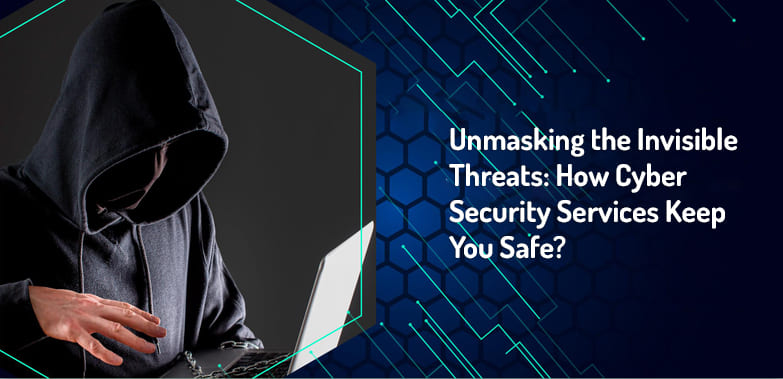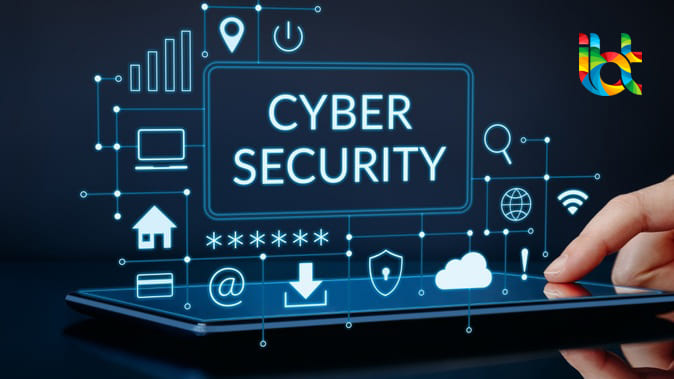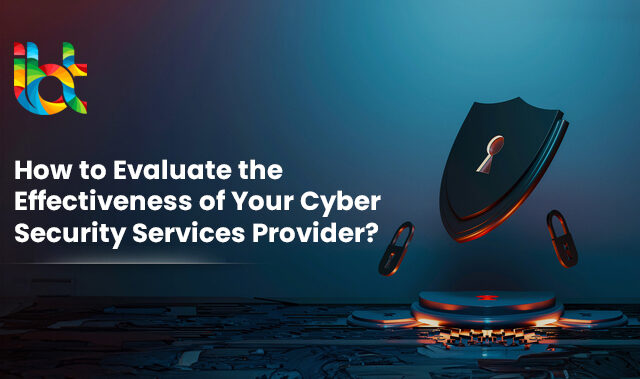
Unmasking the Invisible Threats – How Cyber Security Services Keep You Safe?
Introduction
In an ever-evolving digital landscape, where the intricate web of technology intertwines with our daily lives, the importance of safeguarding our online presence cannot be emphasized enough. Cybersecurity stands as the guardian of this digital realm, protecting us from the lurking threats and vulnerabilities that have the potential to compromise our sensitive information. Welcome to a comprehensive exploration of essential cyber security services that not only enhance your online safety but also empower you to navigate the virtual world with confidence.
What are Cyber Security Services?
Cybersecurity constitutes a facet of information security focused on safeguarding computers, networks, software, and data from unauthorized access. Given its encompassing protection of both organizational and personal data, there exists an interplay between cybersecurity and data protection. Confidentiality, integrity, and availability stand as pivotal security goals, holding utmost significance for both realms within the domain of information security.
Understanding Cyber Security
In recent years, we’ve grown accustomed to embracing significant concepts like digitalization and globalization, utilizing phrases such as “knowledge is power” and “data is the new fuel,” along with adopting foreign terms to illustrate the remarkable strides that are presently reshaping the landscape of business operations, including the Cloud and Machine Learning. Beneath the surface of these developments lies a vast and intricate array of opportunities for companies in an era where the physical realm converges with the digital sphere. Amidst this dynamic realm of business prospects, there also loom cyber risks. Just as companies have transitioned into the digital realm, so too have malicious actors. Hence, any enterprise or institution with a digital footprint must rely on essential cybersecurity services to fortify itself against potential cyberattacks.
The battle on the digital frontier mirrors one aspect: boundless. Enterprises aiming to effectively conquer both current and future obstacles, as well as fend off attacks from wrongdoers, must position cybersecurity as a strategic component as vital as their business model, infrastructure, and personnel.
In the ensuing discussion, we will delve into the primary hazards confronting businesses and institutions within the digital age. We will also outline pivotal cybersecurity services crucial for proactive safeguarding against vulnerabilities and the evolution of novel malicious methodologies.
Unveiling the Layers of Cyber Security

- Firewall Fortifications for Impenetrable Defense
A robust cybersecurity strategy commences with the deployment of a resilient firewall. This digital barrier erects an impervious shield around your digital assets, acting as the first line of defense against malicious entities seeking unauthorized access. Modern firewalls utilize advanced algorithms and threat detection mechanisms to discern normal traffic from potentially harmful intrusions, thus ensuring a seamless user experience without compromising security.
- Intrusion Detection and Prevention Systems (IDPS)
In a cyber realm teeming with ever-evolving threats, proactive measures are imperative. Intrusion Detection and Prevention Systems (IDPS) are the vigilant sentinels that tirelessly monitor network activities, swiftly identifying anomalous patterns that might signify a breach. Through real-time analysis and threat mitigation, IDPS thwart unauthorized attempts and safeguard sensitive data from falling into the wrong hands.
- Cutting-edge Encryption Techniques
Communication in the digital sphere traverses’ vast distances within the blink of an eye, making data interception a looming concern. Encryption emerges as the remedy to this vulnerability. Through intricate algorithms, sensitive information is transformed into an unintelligible cipher during transmission, rendering it indecipherable to unauthorized interceptors. This ensures that your messages, transactions, and personal details remain for your eyes only.
- Multi-factor Authentication (MFA)
In the realm of cyber security, the adage “two heads are better than one” translates to “two authentication factors are more secure than one.” Multi-factor Authentication (MFA) takes authentication beyond mere passwords, introducing additional layers of verification. This can include fingerprint scans, one-time codes, or biometric recognition. By bolstering the authentication process, MFA fortifies the gates to your digital kingdom against unauthorized entry.
- Threat Intelligence Services
The digital battlefield is rife with ever-mutating threats, necessitating a proactive stance against potential breaches. Threat Intelligence Services serve as the reconnaissance units, scouring the dark corners of the internet to identify emerging threats and vulnerabilities. Armed with this knowledge, organizations can adopt preemptive measures, fortifying their cyber defenses before adversaries can exploit weaknesses.
- Penetration Testing and Vulnerability Assessments
A well-prepared army studies its own weaknesses to emerge victorious in battle. Similarly, cybersecurity employs Penetration Testing and Vulnerability Assessments to identify chinks in the armor. Ethical hackers simulate real-world attacks, identifying potential entry points and weak spots. This proactive approach enables organizations to mend the chinks and fortify their defenses, reducing the likelihood of successful cyberattacks.
Big Security Threats
The cybersecurity landscape is constantly evolving. New types of attacks, techniques, and methodologies emerge every day, and as a result, the main threats to organizations are constantly changing.
IBT IT Security has mapped the top ten security threats based on the likelihood of attacks and the level of risk associated with their impact on organizations. The top ten threats are:
- Ransomware
- Phishing
- Data breaches
- Supply chain attacks
- Zero-day attacks
- IoT attacks
- Cloud attacks
- Social Engineering
- Insider threats
- Misconfigurations
IBT IT Security team also points out that 80% of cyber-attacks today leverage identity-based attacks to compromise legitimate user credentials and then use lateral movement techniques to evade detection.
While technology is essential for detecting threats and patching vulnerabilities, users also play a vital role in reducing risk and preventing malicious actors from succeeding. By being aware of the latest threats and by practicing good cyber hygiene, users can help to protect their organizations from attack.
Top Three Risk
Among the array of security threats, the IBT team underscores the most significant 3 risks, considering both the likelihood of these attack types occurring and their potential impact on organizational systems. These comprise ransomware attacks, phishing, and the malicious exploitation of credentials.
- Ransomware
For decades, malware has inflicted torment upon companies and individuals worldwide. Viruses and Trojans have infiltrated the systems, software, and hardware of numerous organizations. In recent times, ransomware attacks have surged to prominence.
This form of malware infiltrates systems, seizing stored data and information. A ransom is then demanded in exchange for their release, hence the “ransom” prefix. By holding data hostage, attackers illegitimately enrich themselves at the expense of victims.
Similar to other malware, ransomware gains entry through malicious links that, when clicked, initiate the download of the malicious software. Alternatively, it can infiltrate through counterfeit applications that users unknowingly install on their devices.
Hence, fostering user awareness is paramount in preventing ransomware from infiltrating organizational systems, breaching security, and gaining access to confidential and valuable data. IBT experts therefore classify the risk level of such attacks as critical for both companies and institutions.
- Phishing and Spear Phishing Attacks
Apart from the proliferation of malware, social engineering attacks have gained significant traction recently, demonstrating increased sophistication and effectiveness. Among these, phishing attacks stand out prominently.
This method involves dispatching emails that convincingly mimic legitimate correspondence from trusted entities, like banks, public institutions, or energy companies. Yet, these emails are not from the claimed organizations; rather, they are orchestrated by criminals who have assumed their identity. The intent is to manipulate recipients into divulging crucial data and information, such as personal or company banking details.
Phishing attacks result in identity theft, unauthorized entry into organizations, and the execution of illicit operations. These actions can culminate in substantial financial losses for targeted businesses and individuals, while also triggering reputational damage and business crises.
Furthermore, phishing is frequently utilized to acquire credentials that subsequently enable unauthorized access to an organization. These infiltrations may serve as a means to perpetrate further fraudulent activities or simply maintain a covert presence within the organization.
- Use of Credentials
IBT Security experts emphasize that the utilization of credentials to gain access to an organization’s system can serve various attack objectives, spanning from brute force tactics to social engineering and credential theft or fraud.
Traditional security measures related to credential usage, particularly credential generation, are progressing towards a paradigm where human involvement is minimized.
Hence, the establishment of a robust credential management system is imperative, accompanied by ongoing auditing and rigorous security strategy testing. It is through the implementation of indispensable cybersecurity services that a company’s software and hardware can be fortified, safeguarding against the theft, misuse, or unauthorized acquisition of user credentials.
Arming Yourself to win the Digital War: The must-have Cyber Security Services
</ br></ br>

Having provided a concise outline of the primary threats warranting organizational attention and the core security trends in previous sections, let’s delve deeper. In light of the prevailing landscape, it becomes imperative to explore the requisite cyber security services. What specific services should a company engage to shield itself from malevolent entities, forestall security breaches, and avert the ensuing crises?
While the array of available services is extensive, we can categorize essential cybersecurity offerings into three principal domains for businesses operating in the digital age: security audits, penetration testing, and offensive and defensive services.
Security Audit Services
In ancient times, during times of conflict, people placed paramount importance on fortifying their walls and strongholds to withstand the onslaught of adversaries. Despite the vast changes the world has undergone, contemporary defensive strategies still adhere to analogous principles and concepts from antiquity.
In this context, safeguarding an organization against cyber threats and mitigating security vulnerabilities necessitates subjecting its assets to comprehensive security audits conducted by seasoned analysts and experts possessing substantial experience.
Hence, when discussing indispensable cybersecurity services of today, the foremost consideration must be security audits. These assessments unveil vulnerabilities existing within a company’s diverse assets that malevolent actors could exploit.
Such audits enable analysts to pinpoint actual threats that could imperil a company’s technological infrastructure, directly impacting its operations.
Conducting security audits entails a series of specialized tests, mindful of the latest advancements in both attack methodologies and defense strategies. Within the spectrum of diverse security audit services, special emphasis should be placed on those centered around:
- Web Applications
- Mobile Applications
- Internet of Things (IoT)
- Cloud Infrastructures
- Source Code
- Advanced Banking Environments
- Denial of Service (DoS) Testing
- Reverse Engineering
- Operating System and Technology Bastioning
Advanced Penetration Testing Services
Security audits lay the foundation for establishing a comprehensive security strategy. However, it’s insufficient for a company to solely audit its technological infrastructure; rigorous testing is equally imperative.
Enter one of today’s indispensable cybersecurity services: advanced penetration testing. Through this approach, vulnerabilities can be pinpointed, exploited, and subsequently addressed.
Dedicated teams of penetration testers are tasked with orchestrating simulated cyberattacks. These simulations serve to unearth prevailing weaknesses within an organization’s systems. Upon identifying these vulnerabilities, experts then proceed to exploit them, crafting a precise assessment of the risks confronting the business. Drawing from the wealth of insights garnered, comprehensive solutions are formulated to rectify the encountered issues.
Among these essential cyber security services we can highlight:
- Internal and External Pentesting
- WiFi Pentest
- Social Engineering
Each of these services bestows substantial benefits upon the companies that enlist their expertise. They extend beyond comprehensive mapping of potential security breaches that assailants could exploit. These services encompass rectification measures and the continual fortification of the organizational technological framework. Notably, they remain attuned to the cutting-edge techniques devised and executed by malicious actors, who could potentially breach defenses that were adequate just yesterday.
Furthermore, the adept professionals conducting advanced penetration tests offer invaluable guidance to enterprises. They assist in discerning which threats warrant prioritization, allowing for efficient resource allocation. This approach safeguards the expeditious protection of the most vulnerable areas or the reduction of risks that could exert a more profound impact on the business.
Offensive and Defensive Cybersecurity Services
Audit, test… and take decisive action. Another imperative component of contemporary cybersecurity service is offensive and defensive security.
These services are anchored in a proactive approach, encompassing the exploration of novel, undetected compromise scenarios, the utilization of uncharted targeted attacks, and the simulation of genuine assaults to gauge an organization’s systems and their capacity to counteract aggressions.
Opting for such services signifies a shift in paradigm, reframing the security of organizational systems as not merely a compilation of defensive strategies, but also a proactive endeavor. In essence, companies should not await an attack passively; rather, they must actively verify that their systems are effectively fortified against both known and unforeseen assaults.
Moreover, organizations should maintain fully operational teams that are poised not only to identify and evaluate threats, but also to proficiently mitigate and rectify any security incidents that may arise.
Given the perpetual evolution of attackers’ tactics and techniques, offensive and defensive services assume a paramount role in ensuring the perpetual and robust safeguarding of companies’ systems.
Among the main offensive and defensive cyber security solutions, we can put focus on:
- Threat Hunting
- Red Team
- Blue Team
- Compromise Assessment
IBT security provides next-generation cybersecurity consulting services to help your organization build cyber resilience from the inside out.
In search of strategies to safeguard your business or personal data from cyber threats? Your quest ends here with our all-encompassing cyber security services. Our team of specialists is poised to offer tailored solutions that ensure the utmost safety and security of your valuable information.


GLOBAL & REGIONAL BRANDS THAT TRUST IBT



























